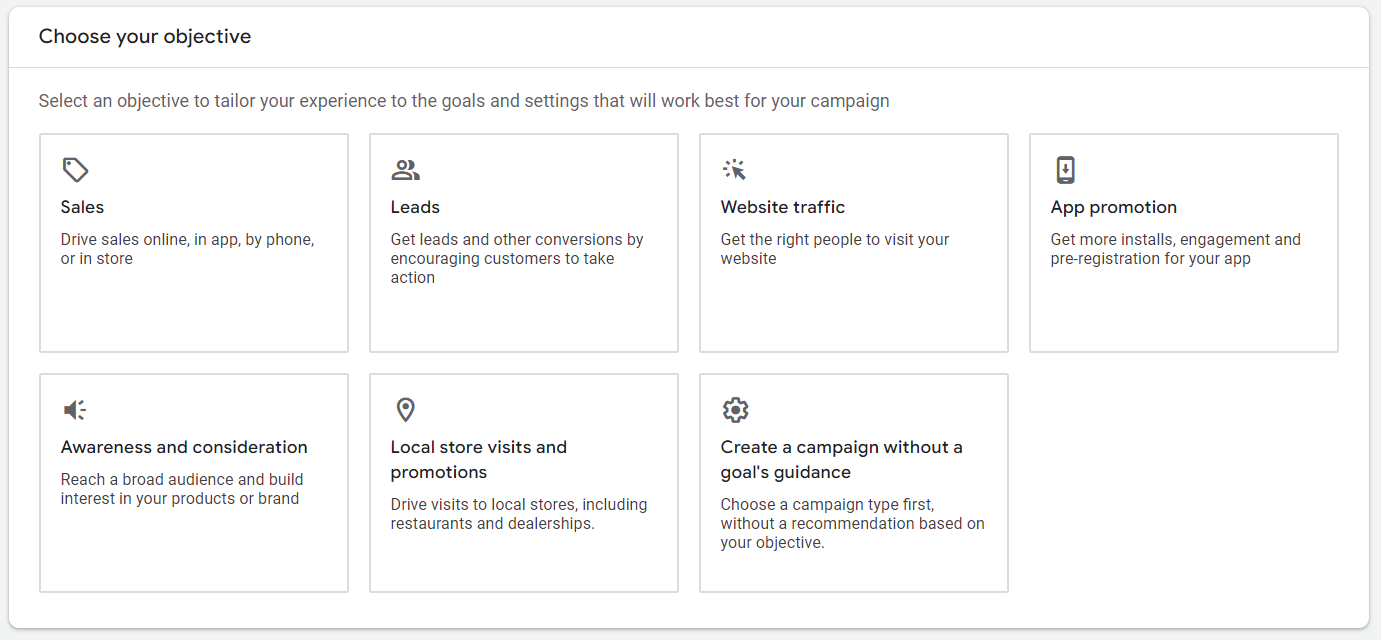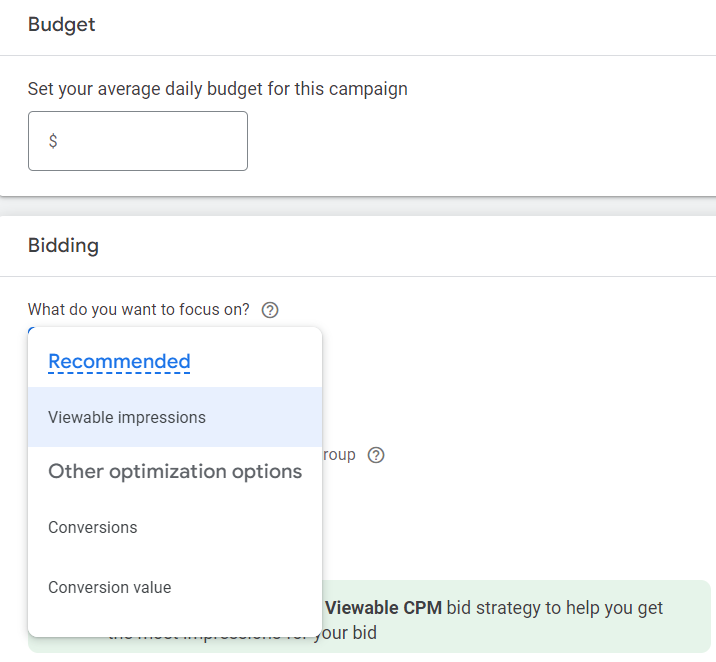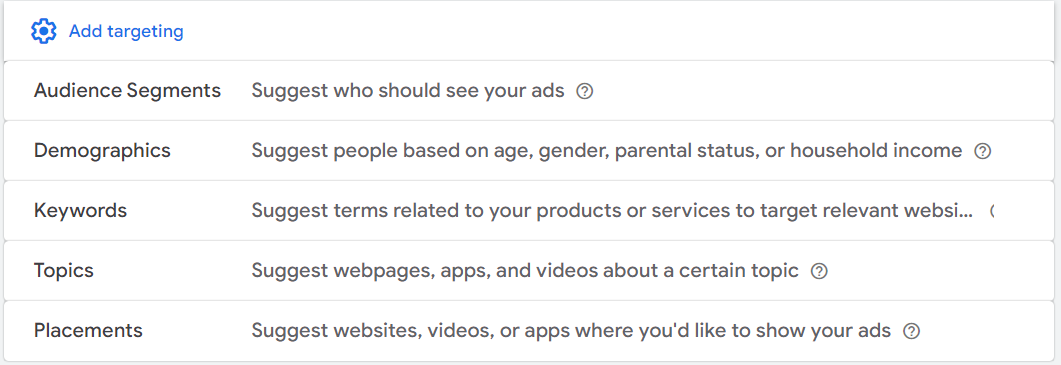Imagine browsing your favorite blog and spotting a visually engaging ad that seamlessly fits the content and stands out just enough to grab your attention.
That’s the power of display advertising at work.
If you’re a digital marketing professional, you’ve likely heard of display networks as part of PPC advertising.
But are you using this channel to the best of your abilities?
In a world where advertising changes daily, it can be difficult to keep up with the best ways to optimize display ads.
In this in-depth guide, we’ll explain display advertising, its different types, and how it differs from search. We’ll also provide strategies and tools to help you take your display ads to the next level.
What Is Display Advertising?
Display advertising is a type of online advertising that typically uses images or videos to showcase your brand.
Thanks to responsive display ads, this ad format becomes much more personalized and can include elements like:
- Text.
- Images.
- Videos.
- Logos.
Potential customers see these ads while browsing the internet, using other mobile apps, social media platforms, or even connected TV devices.
Display ads are meant to capture the user’s attention in a way that doesn’t disrupt their experience. At the same time, they also encourage them to take action.
While display ads are typically associated with top-of-funnel marketing, advertisers use these ads across the buyer’s entire user journey. Brands can use display ads for:
- Brand awareness.
- Product-specific marketing.
- Promotional sales.
- Promoting specific content or services.
- And much more.
Types Of Display Ads
By understanding the various types of display ads available, you can choose the right format to align with your marketing goals and effectively reach your target audience.
Each type offers unique advantages and can be used strategically to maximize engagement and conversions.
Responsive Display Ads
Unique to the Google Display Network, responsive display ads automatically adjust their size, appearance, and format to fit available ad spaces.
Advertisers provide assets such as images, headlines, logos, and descriptions, and Google uses machine learning to create the best possible combinations for different placements, unique to each user.
This flexibility allows responsive display ads to reach a broader audience and perform well across a wide range of devices and websites.
Banner Ads
Banner ads are considered a more traditional type of display advertising.
Banner ads appear across websites and apps and are placed at the top, bottom, or sides of webpages.
They’re typically static in format but can also use animation to catch the user’s eye without being too disruptive to their experience.
Interstitial Ads
Interstitial ads are full-screen ads that cover the whole screen of a webpage or an app.
They typically show up during natural transition points of a web session, like waiting for content to load or going between app screens.
They’re meant to be highly engaging but should be used strategically and sparingly to not overwhelm or annoy the user.
Rich Media Ads
Rich media display ads offer a more interactive experience with a potential customer.
What makes them interactive compared to the other display advertising types?
The beauty of this ad type is the combination of video, image, audio, and clickable elements to engage a user more fully.
Native Ads
The opposite of rich media ads would be native ads. This ad type is meant to blend seamlessly with the content and overall design of a webpage.
Native ads are meant to be non-disruptive to the user experience because they can match the look and feel of the content surrounding the ad.
By blending in more cohesively, it can help increase engagement rates.
Retargeting Ads
Retargeting display ads are intended to re-engage past website or app users who haven’t taken the desired action.
This ad type can look like any of the above-mentioned ad formats, or it could show dynamic content based on the user’s previous browsing history.
Unlike standard display ads, retargeting ads aren’t meant to scale broadly. They have a specific intended audience to invite them back to make a purchase.
Display Advertising Vs. Search Advertising
Display ads and search ads are both essential components of a sound digital marketing strategy.
However, they both serve different purposes and are meant to complement each other – not compete.
Below are the key main differentiators between display and search ads:
- Targeting. While display ads typically use targeting like demographics, interests, and browsing behavior, search ads are primarily keyword-based and what they search for.
- Intent. Display ads can help create demand by focusing on awareness and product consideration. Search ads, on the other hand, are intended to capture existing demand.
- Ad format. Display ads are more visual in nature and utilize elements like images, videos, text, and logos. Search ads are primarily text-based with headlines and descriptions.
- Reach. Display ads can reach broader audiences across the internet and are easier to scale. Search ads are limited to the specific search engines and their search partner networks, if applicable.
Display Advertising Examples
Display Ads come in many different shapes and sizes. Below are a few examples of ads found across the web in a variety of sizes.
Example: Leaderboard Display Ad
The example below was taken as I was browsing People.com. This ad for US Bank appeared at the top of the page before the hero content.

Example: Skyscraper Display Ad
This example was taken as I was browsing Business Insider. An ad for Oracle Netsuite showed on the right-hand side of the page on a desktop device.
 Source: Businessinsider.com, screenshot taken by author, July 2024
Source: Businessinsider.com, screenshot taken by author, July 2024Example: Mobile Display Ad
I found this ad when reading a blog post on Southern Living on my mobile device. A display ad for Best Buy was inserted between paragraphs of the blog post.
 Source; Southernliving.com, screenshot taken by author July 2024
Source; Southernliving.com, screenshot taken by author July 2024Display Advertising Strategy
Just like any other campaign type, display advertising should be driven by a sound strategy.
Let’s take a look at some of the key components of crafting a display advertising strategy.
1. Define Clear Goals
It’s important to establish the objective of each display campaign, such as brand awareness, lead generation, or sales.
If you’re not sure where to start, take a step back and consider your overarching business needs and what you’re trying to achieve.
For example, are you looking to gain new customers or re-engage existing customers? Is brand awareness more important, or are you looking to drive sales of a new product?
In Google Ads, you’ll start the campaign creation by choosing from the following objectives and then choose the ‘Display’ campaign type after choosing an objective:
 Screenshot taken by author, July 2024
Screenshot taken by author, July 20242. Choose Your Budget, Bidding Strategy, And Audience
Budgets and bid strategies are set at the campaign level.
The typical bid strategy pricing models for display ads are a cost-per-click (CPC) basis or a cost per 1,000 impressions (CPM) model. You’ll want to choose the one that aligns with the campaign goal and your overall budget.
In this example, I chose “Awareness” as the campaign objective, so Google Ads recommends a Viewable impressions bid strategy.
 Screenshot taken by author, July 2024.
Screenshot taken by author, July 2024.Next is to refine the audience targeting for your campaigns.
If the goal is to attract new customers, you can use your own data on existing customers to build audience profiles to target.
Keep in mind the demographics, interests, and overall browsing behavior when putting together your target audience.
 Screenshot taken by author, July 2024.
Screenshot taken by author, July 2024.3. Choose Display Ad Type, Format, And Placements
The nice part about Google Ads is the ability to target (or exclude) specific website placements or apps to ensure your ads show up in the right place.
You may be tempted to choose a short list of very specific websites, but by doing so, you could end up limiting your reach immensely. It’s also not guaranteed that your ads will show on those placements if your budget or bid is not competitive enough.
At the beginning, use negative placements to your advantage to exclude sites where your content would be inappropriate.
Now, as for ad size and format, there are two options in Google Ads:
- Uploaded display ads.
- Utilize responsive display ads (RDAs).
The main benefit of using uploaded display ads is that you have full control over the design. However, not all websites utilize these formats, and you may be missing out on additional reach if you opt not to use RDAs.
The most typical banner sizes for uploaded display ads include:
- 728×90 (leaderboard).
- 300×250 (medium rectangle).
- 336×280 (large rectangle).
- 300×50 (mobile banner).
- 160×600 (skyscraper).
If you opt to use responsive display ads, Google takes the guesswork out of ad sizes for you.
Essentially, you’ll provide the basic elements, and Google will mix and match that content to create personalized ads for each user based on when and where they’re browsing.
Be sure to provide these essentials for a well-formatted ad:
- Images.
- Logos.
- Brand name.
- Headlines.
- Descriptions.
- Custom colors.
- Call-to-action (CTA) text.
4. Focus On Creating Compelling Ad Content
Expanding on point #3 above, the visual design is your chance to capture the user’s attention.
A boring ad won’t stand out and can turn customers away. When designing ads, make sure to design visually appealing ads that align with your brand.
Additionally, make sure to test different elements and rotate out poor-performing elements.
It’s especially important to remain visually consistent if you’re marketing across different channels like social media. Consistent brand recognition across platforms can pay dividends over time.
5. Track And Optimize Performance
Once your display campaign is launched, you’ll want to monitor the key metrics chosen for the campaign objectives.
It may be tempting to make changes immediately, but it’s important to give the algorithm time to learn before making any major changes.
Unless something serious goes awry, like showing up on inappropriate placements, give the campaign time to run and then make tweaks based on the data coming in.
For example, if an ad shows a lot of impressions but few clicks, you may need to change the creative elements to capture the user’s attention more. Or, it could be the placements that need tweaking.
Or, if an ad is getting a ton of clicks but very few conversions, it may not be the ad itself; it could mean the landing page needs to be optimized. Try segmenting the ads by device to identify if the majority of clicks are coming from mobile and if the corresponding landing page is optimized for mobile delivery.
Ongoing campaign monitoring and optimization are vital for delivering optimal ROI to your display ads.
Read More:
Top Display Advertising Networks
Believe it or not, there’s a ton of different advertising networks to choose from as an alternative to Google.
Depending on your goal and usage of Display ads, you may need a different platform.
Some of the top Display ad network platforms include:
- AdRoll
- Amazon
- StackAdapt
- AirNow Media
- Yahoo Ad Tech
You can find a full recommended list of Display Ad networks here.
Read More:
Display Advertising Tools
Depending on which stage you’re in for creating or running display ads, there are multiple tools to help take your display ads to the next level.
Ad Creation And Design Tools
If you’re looking to create display ads where you have full control, there are many user-friendly tools to help guide the ad creation process.
- Google Web Designer: This is a free tool from Google that allows you to create HTML5 ads and motion graphics.
- Canva: A more user-friendly option that has tons of templates to start from or the ability to create from scratch.
- Bannersnack: This tool is specifically for creating banner ads, but it simplifies the design process with drag-and-drop components.
Ad Analysis And Optimization Tools
Analyzing display campaigns can be half the battle, and you need reliable tools to help optimize these campaigns to the fullest.
- Google Analytics: This tool is essential for tracking and analyzing the performance of your campaigns. It can help marry the metrics like impressions and clicks to user purchase behavior to help you determine where to optimize further.
- Google Ads Performance Planner: If you need help forecasting potential campaign changes, this tool is for you. It takes historical data and trends into considerations to help provide budget and bidding recommendations.
- Hotjar: This is a user behavior tool that can provide session recordings, heatmaps, and more to understand how real users interact with your landing page and website.
Ad Management And Automation Tools
- Google Ads Editor: This tool is great for managing multiple Google Ads campaigns offline, allowing for bulk changes and uploading changes on your own time.
- Optmzyr: This platform offers more automation and streamlined workflow for PPC campaigns, including display ads.
- Semrush: This platform can help with competitive analysis for display ads, which can help you refine your strategies.
Summary
Display ads are part of any comprehensive digital marketing strategy.
Because of their scalability and reach, display ads can cast a wide net to make potential customers aware of your brand and increase engagement and, ultimately, sales.
From traditional banner ads to innovative, responsive display ads, each type serves a unique purpose in capturing user attention and driving conversions.
By understanding the differences between display and search advertising, leveraging effective strategies, and utilizing various tools for ad creation, design, analysis, and optimization, you can maximize the impact of your display advertising campaigns.
More resources:
Featured Image: BestForBest/Shutterstock
 seolounge
seolounge